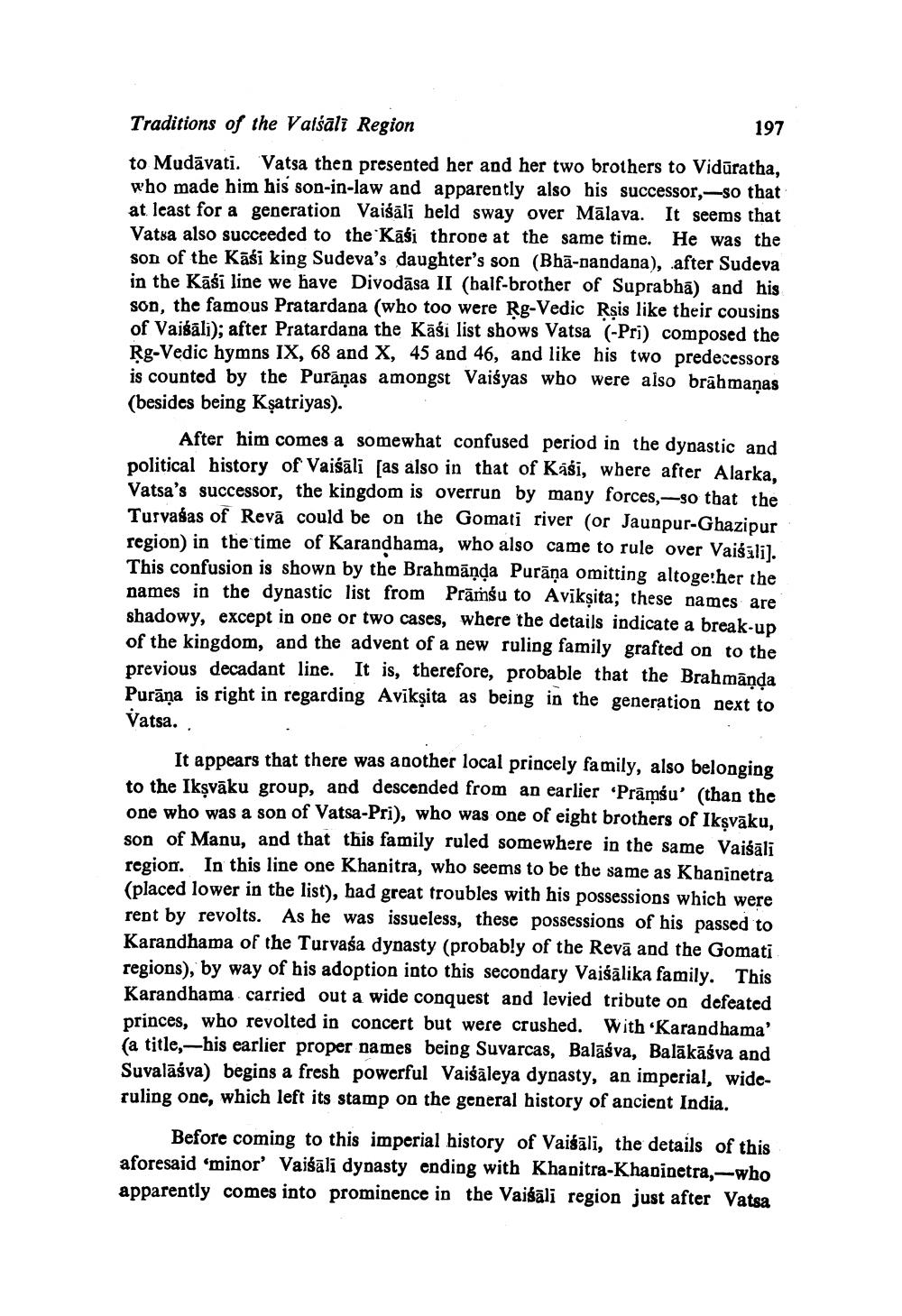________________ Traditions of the Vaisali Region 197 to Mudavati. Vatsa then presented her and her two brothers to Viduratha, who made him his son-in-law and apparently also his successor,--so that at least for a generation Vaisali beld sway over Malava. It seems that Vatsa also succeeded to the Kagi throne at the same time. He was the son of the Kasi king Sudeva's daughter's son (Bha-pandana), after Sudeva in the Kasi line we have Divodasa II (balf-brother of Suprabha) and his son, the famous Pratardana (who too were Rg-Vedic Rsis like their cousins of Vaigali); after Pratardana the Kasi list shows Vatsa (-Pri) composed the Rg-Vedic hymns IX, 68 and X, 45 and 46, and like his two predecessors is counted by the Puranas amongst Vaisyas who were also brahmanas (besides being Ksatriyas). After him comes a somewhat confused period in the dynastic and political history of Vaisali [as also in that of Kasi, where after Alarka, Vatsa's successor, the kingdom is overrun by many forces, so that the Turvagas of Reva could be on the Gomati river (or Jaunpur-Ghazipur region) in the time of Karandbama, who also came to rule over Vaisili). This confusion is shown by the Brahmanda Purana omitting altogether the names in the dynastic list from Pramsu to Aviksita; these names are shadowy, except in one or two cases, where the details indicate a break-up of the kingdom, and the advent of a new ruling family grafted on to the previous decadant line. It is, therefore, probable that the Brahmanda Purana is right in regarding Aviksita as being in the generation next to Vatsa.. It appears that there was another local princely family, also belonging to the Iksvaku group, and descended from an earlier <<Pramau' (than the one who was a son of Vatsa-Pri), who was one of eight brothers of Iksvaku, son of Manu, and that this family ruled somewhere in the same Vaisali region. In this line one Khanitra, who seems to be the same as Khaninetra (placed lower in the list), had great troubles with his possessions which were rent by revolts. As he was issueless, these possessions of his passed to Karandhama of the Turvasa dynasty (probably of the Reva and the Gomati regions), by way of his adoption into this secondary Vaisalika family. This Karandhama carried out a wide conquest and levied tribute on defeated princes, who revolted in concert but were crushed. With Karandhama' (a title,-his earlier proper names being Suvarcas, Balasva, Balakasva and Suvalasva) begins a fresh powerful Vaisaleya dynasty, an imperial, wideruling one, which left its stamp on the general history of ancient India. Before coming to this imperial history of Vaisali, the details of this aforesaid 'minor' Vaisali dynasty ending with Khanitra-Khaninetra, who apparently comes into prominence in the Vaisali region just after Vatsa




